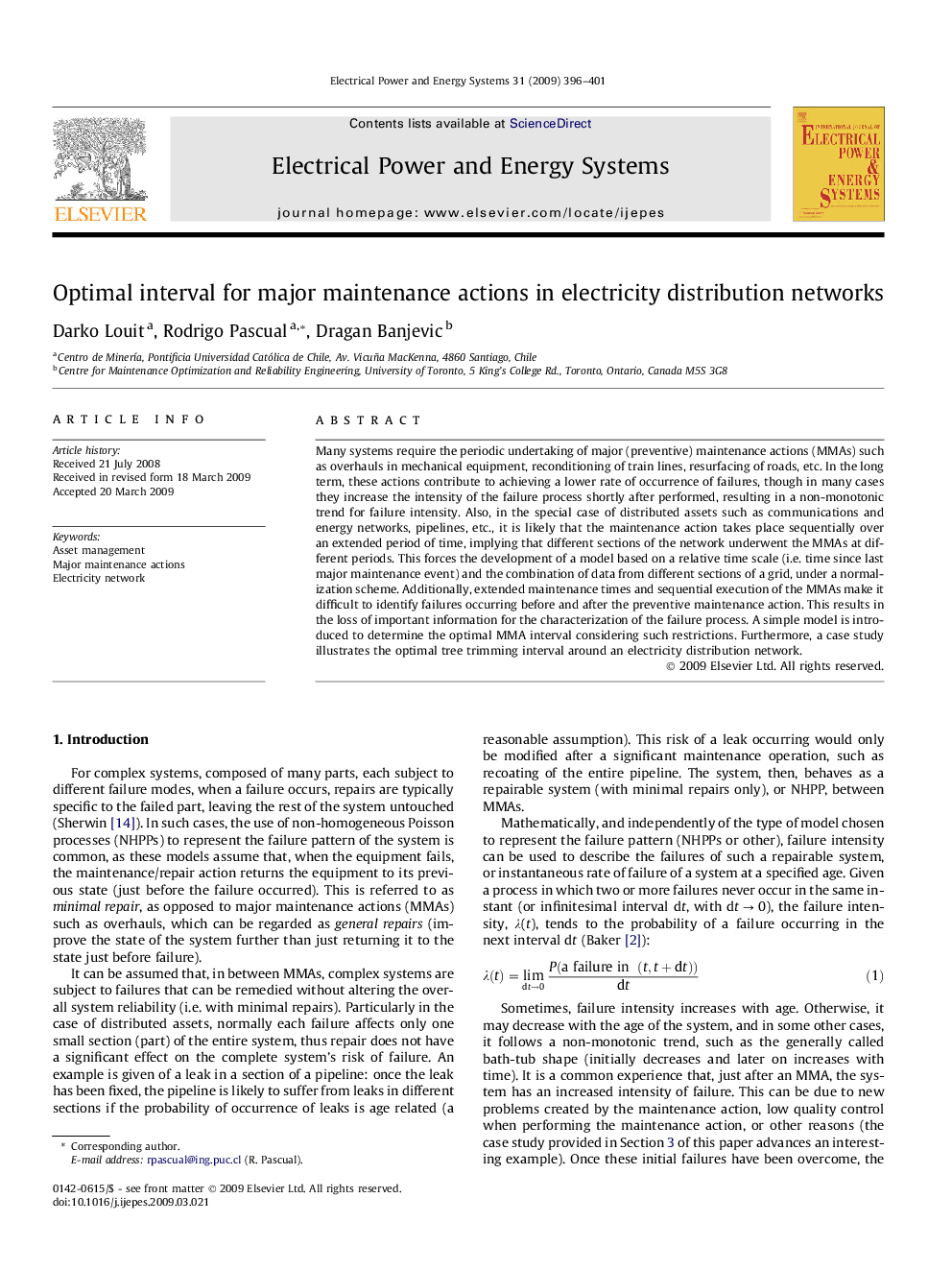| Article ID | Journal | Published Year | Pages | File Type |
|---|---|---|---|---|
| 399080 | International Journal of Electrical Power & Energy Systems | 2009 | 6 Pages |
Many systems require the periodic undertaking of major (preventive) maintenance actions (MMAs) such as overhauls in mechanical equipment, reconditioning of train lines, resurfacing of roads, etc. In the long term, these actions contribute to achieving a lower rate of occurrence of failures, though in many cases they increase the intensity of the failure process shortly after performed, resulting in a non-monotonic trend for failure intensity. Also, in the special case of distributed assets such as communications and energy networks, pipelines, etc., it is likely that the maintenance action takes place sequentially over an extended period of time, implying that different sections of the network underwent the MMAs at different periods. This forces the development of a model based on a relative time scale (i.e. time since last major maintenance event) and the combination of data from different sections of a grid, under a normalization scheme. Additionally, extended maintenance times and sequential execution of the MMAs make it difficult to identify failures occurring before and after the preventive maintenance action. This results in the loss of important information for the characterization of the failure process. A simple model is introduced to determine the optimal MMA interval considering such restrictions. Furthermore, a case study illustrates the optimal tree trimming interval around an electricity distribution network.
